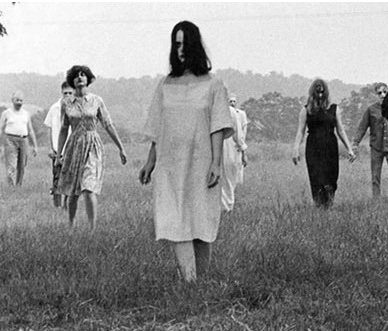
In order to model human movement for incorporation into film animation Max Fleischer, in 1915, devised a system called rotoscoping that would allow animators to trace over live-action film. Koko the Clown was the first figure thus generated. The apparatus was refined over the decades and by the late 70s came to be used in such special effects as the lightsabers in the first three ‘Star Wars’ features.
In the early 80s computers began to be used for the analysis of movement. The process involved attaching potentiometers to a body and using the output to drive computer animated figures for choreographic studies and clinical assessment of movement abnormalities.
In order to model human movement for incorporation into film animation Max Fleischer, in 1915, devised a system called rotoscoping that would allow animators to trace over live-action film. Koko the Clown was the first figure thus generated. The apparatus was refined over the decades and by the late 70s came to be used in such special effects as the lightsabers in the first three ‘Star Wars’ features.
A little later, to quote from this useful article, optical tracking systems were developed. ‘Optical trackers typically use small markers attached to the body – either flashing LEDs or small reflecting dots – and a series of two or more cameras focused on the performance space.
A combination of special hardware and software pick out the markers in each camera’s visual field and, by comparing the images, calculate the three-dimensional position of each marker through time.’ By 1994 the operation was digitised and by 1996 could be seen comprehensively threaded through the effects in ‘Titanic’.
The technology continues to develop, of course, and increasingly assumes a cultural importance quite distinct from its technical achievements. Two of my students pointed out that the use of the ‘bubble suit’, worn by actors in current motion capture practice, features the actor transformed into a puppet for the purpose of modelling realistic movement for a puppet.

The actor will enact the moves that are, effectively, imprinted on to the screen figure. The puppet thus animated will have movement capacities that border on the uncanny and will, in excitable circles, prompt the already fatigued assertion that ‘Computer Generated Imagery will soon replace real actors!’ We can dispense with this non-debate by coolly observing ‘It will never happen.’
The technology continues to develop, of course, and increasingly assumes a cultural importance quite distinct from its technical achievements. Two of my students pointed out that the use of the ‘bubble suit’, worn by actors in current motion capture practice, features the actor transformed into a puppet for the purpose of modelling realistic movement for a puppet. The actor will enact the moves that are, effectively, imprinted on to the screen figure. The puppet thus animated will have movement capacities that border on the uncanny and will, in excitable circles, prompt the already fatigued assertion that ‘Computer Generated Imagery will soon replace real actors!’ We can dispense with this non-debate by coolly observing ‘It will never happen.’
What, however, is happening, in part due to neo-folkloric attitudes to CGI, is an inexorable process of abasement in relation to animated figures and their imagined power. Despite using movement that is not their own, the CGI figures have an efficiency that results in their being experienced, at some level, as a species of vampiric contender. Puppets and dolls in popular culture (get box-set here) have long been associated with having murderous designs on their unsuspecting human stewards (see definitive scholarly study here). The imprinting of these malignancies onto cartoon characters has been a slower process, impeded by the narratives and personalities attached to the colourful 2Ds masquerading as 3Ds – a cartoon villain is clearly villainous and therefore not to be found in any way uncanny.

At the point where borrowed or ‘captured’ movement becomes acceptably realistic, its bearer – the animated figure – becomes unsettling, regardless of character imprinting and physiognomy. It is more goblin than elf and, insofar as it seems to have substance rather than mere spirit, more zombie than spectre.
If we persist with the fairyfication, then the animated figure is an embodiment of an advanced and complicated technology that may be viewed as a stealer of souls, a producer of doubles and an adept at the switcheroo previously practised by the fairies that took your baby away and left you with a spooky changeling. The industrial champions of CGI compound all this with their ‘soon be better than the real thing’ boastfulness.
The animation technologies are themselves embodiments of technological slave systems, in the sense that a machine or component may control another machine or component. To be controlled by a machine is to be forcibly machinised and might suggest a condition in which one’s movements were constantly surveilled or even captured. The term ‘motion capture’ is efficient, especially when shifted from the movies to the experience of having the status of a component.
28.11.2008

